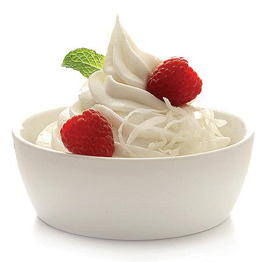There are many home remedies for fibromyalgia. Everything from exercise, to diet, to dietary supplements, to herbs may help the fibromyalgia sufferer find relief from symptoms at home.
Fibromyalgia is a puzzling illness with over thirty- nine identifiable symptoms. Treatment for fibromyalgia is rather “hit or miss” within the medical community.
When pharmaceutical drugs are prescribed, side effects from the drugs often mean taking even more drugs to offset the side effects. Many people turn to home remedies instead.
Some home remedies for fibromyalgia work to relieve symptoms, and some do not. Listed below are some home remedies for fibromyalgia that either are scientifically proven to work or have plenty of anecdotal support for efficacy.
Brisk power walking or other forms of cardiovascular exercise, keeps blood circulating through the entire body. Circulation delivers both nutrition and oxygen to every cell in the body.
Yoga combines deep breathing with gentle stretching and bodyweight exercises. The practice of yoga helps support the general health and sense of well- being in fibromyalgia patients by relieving aches and pains in the muscles and joints.
The mental concentration required in yoga practice helps fibromyalgia sufferers overcome “fibro fog.” Meditation helps the yoga practitioner stay in the present moment instead of focusing on stressful life events and painful symptoms.

Qi gong combines gentle movement, breathing, concentration, and meditative dance with the movement of “qi,” or life force energy. People with fibromyalgia who practice qi gong report having more energy and less pain.
Tai chi is somewhat similar to qi gong in that it also involves the practice of slow, gentle movements. Tai chi is somewhat like performing forms in martial arts in slow motion.
Each movement in tai chi is fluid and meditative, intending to achieve balance and harmony in all of life.
Strength training improves circulation, relieves depression, strengthens various muscle groups, and helps with weight loss and toning the muscles.
Working out at the gym with free weights helps to relieve pain associated with fibromyalgia, and brings a sense of self-confidence and well- being.
Combining traditional strength training with whole-body vibration has been clinically proven to reduce pain in fibromyalgia patients better than strength training alone, according to a 2008 study published in the Journal of Alternative and Complementary Medicine.
Anecdotal evidence supports the idea that the diet of a fibromyalgia patient does make a big difference. Many people with fibromyalgia suffer from a variety of food allergies.
Although there is no one food that all fibromyalgia sufferers are sensitive to, common foods are preservatives, eggs, gluten, dairy, and MSG.
James McKoy, MD, staff rheumatologist at Kaiser Permanente in Honolulu, Hawaii, tells his fibromyalgia patients to keep a food journal to track down which foods make them feel better and which ones make them feel worse.
The food journal may be kept for as long as a year, while patients record how they feel after eating a variety of foods. Over a period of time, it becomes clearer if certain foods are triggering fibromyalgia symptoms.
Eliminating suspect foods from the diet for a month or two and then adding them back, one at a time can help determine if certain foods are aggravating fibromyalgia symptoms.
Fatigue, migraines, and irritable bowel syndrome or constipation are just a few fibromyalgia symptoms that can be triggered by food sensitivities.
While there is no such thing as a “fibromyalgia diet,” eating as “clean” as possible is a good place to start when trying to figure out which foods a person with fibromyalgia may be sensitive to.
Eating “clean” simply means eating a well-balanced diet that is almost exclusively restricted to large amounts of vegetables and fruits, lean proteins, healthy fats, and whole grains.
Eating “clean” also means eliminating all refined foods, artificial chemicals and preservatives, and alcoholic beverages.
Some people with fibromyalgia, after cleaning up their diet, realize they have trouble with dairy products and grains. If this is the case, ancestral diets such as the Paleo diet may provide relief for fibromyalgia symptoms.
The Paleo diet keeps lean animal protein, healthy fats, and large amounts of vegetables and some fruits. It eliminates all grains, especially wheat, but does allow sweet potatoes.
Another group of foods that seem to give a large number of fibromyalgia patients problems is the nightshade group. These foods include tomatoes, eggplant, white potatoes, peppers, and tobacco.
The nightshade plants contain a chemical called solanine. Solanine causes muscle and joint pain and inflammation in individuals who are sensitive to it.
One suggestion for both meat-eaters and vegans alike is to eat more ‘alkalizing” foods. Foods like coffee, sugar, white flour, soft drinks, and alcohol are highly acidic. They rob the body of minerals and can lead to a host of problems, including cancer and osteoporosis.
Eating more alkaline foods helps replace those minerals. Alkaline foods help to reduce muscle and joint pain, elevate the mood, and reduce migraines.
Alkaline foods include such things as apple cider vinegar, lemons, green leafy vegetables, cucumbers, celery, and broccoli.
If fibromyalgia sufferers are still noticing symptoms on the Paleo diet, the next step in the elimination process is to remove all animal products and adopt a vegan diet. Vegans consume plant produce exclusively.
Among vegan diets, becoming a raw vegan may provide the most vitamins, minerals, and enzymes in a plant-based diet.
Eating smaller meals several times a day may help a person with fibromyalgia keep energy levels up.
Ann Vincent, MD, director of Mayo Clinic's Fibromyalgia Clinic in Rochester, Minnesota, says that eating small meals and snacks which include both a protein and carbohydrate source may help fibromyalgia patients avoid fatigue in the middle of the afternoon.
Eating breakfast is also extremely important to the person with fibromyalgia.
A breakfast consisting of protein and a complex carbohydrate, such as egg whites and a bowl of oatmeal, will give a person with fibromyalgia energy after what may have been a sleepless night.
It will also keep the blood sugar from spiking and then crashing later in the morning.
Keeping energy and sugar levels even help to keep mood swings at bay, according to Christine Gerbstadt, MD, RD.
 Probiotics are “good bacteria” which help balance the gastrointestinal system and support the entire body. They help break down and help with proper food absorption. They also help correct intestinal disorders such as irritable bowel disorder.
Probiotics are “good bacteria” which help balance the gastrointestinal system and support the entire body. They help break down and help with proper food absorption. They also help correct intestinal disorders such as irritable bowel disorder.
They can protect the body from pathogenic microbes that cause diarrhea, help prevent urinary tract and vaginal infections, and reduce gas.
Probiotics are easy to acquire. Yogurt is probably the best-known source of probiotics, with kefir and buttermilk coming second.
Less well known to the American palette are fermented vegetables such as Korean kimchi, German sauerkraut, and the fermented, fizzy tea known as kombucha.
 There is a large number of dietary supplements that have either clinical support of plenty of anecdotal evidence for relieving fibromyalgia symptoms.
There is a large number of dietary supplements that have either clinical support of plenty of anecdotal evidence for relieving fibromyalgia symptoms.
Vitamins and minerals, herbs, and other dietary supplements can help fibromyalgia patients feel better and improve their health.
Recent clinical studies show a clear connection between fibromyalgia and Vitamin D deficiency. Medical doctors are now recommending that all fibromyalgia patients be tested for Vitamin D deficiency and start a high dose Vitamin D treatment plan.
Magnesium balances calcium in the body. It can be purchased inexpensively as magnesium sulfate, also known as Epsom salt, or as magnesium malate, also known as malic acid.
Calcium causes muscles to contract, cramp, and spasm. Magnesium relaxes muscles and reduces muscular pain. It also creates a laxative effect, easing constipation issues and creating healthy bowel function.
Rheumatologists at the University of Verona, Italy compared L- carnitine supplements against a placebo in 102 fibromyalgia patients in 2007, reporting their findings in the medical journal, Clinical and Experimental Rheumatology.
The study showed that after taking 500mg L-carnitine capsules twice a day plus an injection of 500mg L-carnitine for two weeks, then eight weeks of 500mg L-carnitine twice a day, the following results were observed.
For six weeks, both the control group and the L- carnitine group reported a decrease in pain and the total “myalgic” picture. At ten weeks, however, the placebo group remained unchanged, while the L- carnitine group continued to improve significantly.
Marked positive changes occurred in mood and lessened muscular pain.
The scientists were encouraged, as the treatment was well-tolerated by all of the patients and the positive results indicated that L- carnitine may be suggested as a viable option for the treatment of fibromyalgia.
5-HTP (5- Hydroxytryptophan) is an over the counter dietary supplement made from tryptophan, which synthesizes the neurotransmitters serotonin and melatonin. 5-HTP is sold as a sleep aid, antidepressant, and appetite suppressant.
The Journal of International Medical Research reported in 1990 that 5-HTP significantly improved all measured parameters in fifty fibromyalgia patients who took the dietary supplement.
5-HTP may be able to help people with fibromyalgia sleep better and deeper and reduce their symptoms of anxiety and depression.
Taking over the counter melatonin may also help a person with fibromyalgia to get to sleep and stay asleep. A 2011 clinical study published in the Journal of Pineal Research indicated that melatonin does make a difference in the sleep patterns of fibromyalgia patients.
In the study 101 fibromyalgia patients were divided into groups and tested for both melatonin and the pharmaceutical drug fluoxetine against a placebo.
The study concluded that melatonin alone or in combination with fluoxetine did reduce pain associated with fibromyalgia.
Alternating ice and heat packs on tender points associated with fibromyalgia may help reduce pain. The ice draws the blood deep into the body’s tissues, while heat draws blood up to the surface of the skin.
The heat, whether dry from a heating pad or wet from hot towels or baths, combined with ice, create a pump that delivers nutrients and oxygen to every cell in the area.
A similar effect can be created with hydrotherapy. This easy home remedy for fibromyalgia pain consists of alternating hot and cold water in the shower.
Here, the fibromyalgia patient stands in the shower with the showerhead pointed at the tender points all along the body. A shower wand can be used as well.
The person starts with the hottest water he or she can stand, allowing the hot water to penetrate the skin for a full minute. Then the hot water is turned completely off. Cold tap water then drives the blood back down deep into the muscle tissues.
After a minute, the hot water is turned back on, driving the blood back up to the surface. Routinely, this hot and cold shower takes fifteen minutes, with seven rotations of hot and cold water stimulating the blood and tissues.
There is a long list of herbs that have either clinical documentation or a substantial amount of anecdotal support for fibromyalgia.
Because fibromyalgia has so many symptoms associated with it, herbs work to either support the underlying cause of fibromyalgia or target the symptoms.
 While St. John’s Wort has been long recognized in both the medical and alternative health communities for years, the herb is less well known for its anti-inflammatory properties.
While St. John’s Wort has been long recognized in both the medical and alternative health communities for years, the herb is less well known for its anti-inflammatory properties.
This point was observed by scientists in the UK and reported in the Journal of Dietary Supplements in 2009. The study pointed out that St. John’s Wort was effective in reducing the inflammation associated with fibromyalgia.
Many other herbs have been proven either clinically or through anecdotal evidence to relieve pain and other symptoms of fibromyalgia. A few are listed below:
| Herbs for Fibromyalgia |
| Astragalus and echinacea boost the immune system. |
| Black walnut hull and garlic kill parasites that harbor in the intestines and rob infested people of energy. |
| Burdock root, dandelion, and milk thistle are liver support and cleansing herbs. |
| Ginko biloba relieves "fibro fog" in the brain. |
| Licorice root helps boost adrenal function. |
| Pau d'arco relieves candida (yeast infection) issues. |
| Skullcap and valerian are sedatives, which help calm nerves and help people with fibromyalgia get to sleep. |
| Rosemary is a pain reliever, as are cayenne and white willow bark. |
Sources
Web MD.com, “Fibromyalgia Health Center”
Mayo Clinic. com, “Fibromyalgia Lifestyles and Home Remedies”
Myalgia. com, "Chronic Widespread Pain and the Fibromyalgia Construct,"Robert Bennett MD, FRCP
Oregon Health Sciences University
Natural News.com, “Easy Home-care Remedies Treat Fibromyalgia Joint Pain,"by Susan Laverie
Home Made Medicine. com, “Home Remedies for Fibromyalgia”
Pubmed. gov, Clinical Experimental Rheumatology. 2007 Mar-Apr; 25(2):182-8. “Double-blind, multicenter trial comparing acetyl l-carnitine with placebo in the treatment of fibromyalgia patients.” Rossini M, Di Munno O, et al.
Pubmed. gov, Caruso I, Sarzi Puttini P, Cazzola M, Azzolini V (1990). "Double-blind study of 5-hydroxytryptophan versus placebo in the treatment of primary fibromyalgia syndrome". The Journal of International Medical Research (3): 201–9.
Pubmed. gov, Journal of Alternative and Complementary Medicine. 2008 Oct; 14(8):975-81. “Six weeks of whole-body vibration exerciseimproves pain and fatigue in women with fibromyalgia.” Alentorn-Geli E, Padilla J, et al.
Pubmed. gov, Journal of Dietary Supplements. 2009; 6(1):28-32. “Inhibitory Effects of St. John's Wort on Inflammation: Ignored Potential of a Popular Herb.” Olajide OA.
My Home Remedies.com, “Home Remedies for Fibromyalgia”
[+] Show All







 Probiotics are “good bacteria” which help balance the gastrointestinal system and support the entire body. They help break down and help with proper food absorption. They also help correct intestinal disorders such as irritable bowel disorder.
Probiotics are “good bacteria” which help balance the gastrointestinal system and support the entire body. They help break down and help with proper food absorption. They also help correct intestinal disorders such as irritable bowel disorder. There is a large number of dietary supplements that have either clinical support of plenty of anecdotal evidence for relieving fibromyalgia symptoms.
There is a large number of dietary supplements that have either clinical support of plenty of anecdotal evidence for relieving fibromyalgia symptoms. While St. John’s Wort has been long recognized in both the medical and alternative health communities for years, the herb is less well known for its anti-inflammatory properties.
While St. John’s Wort has been long recognized in both the medical and alternative health communities for years, the herb is less well known for its anti-inflammatory properties.